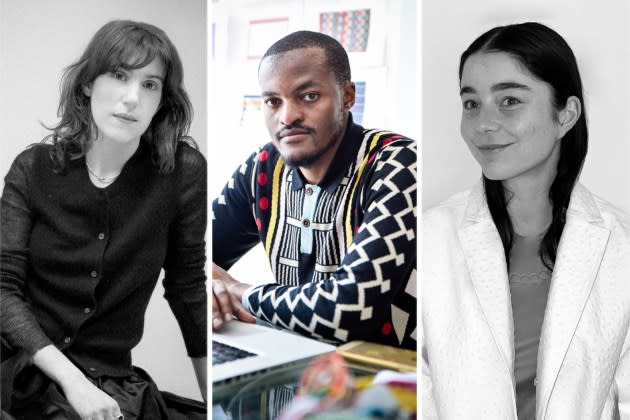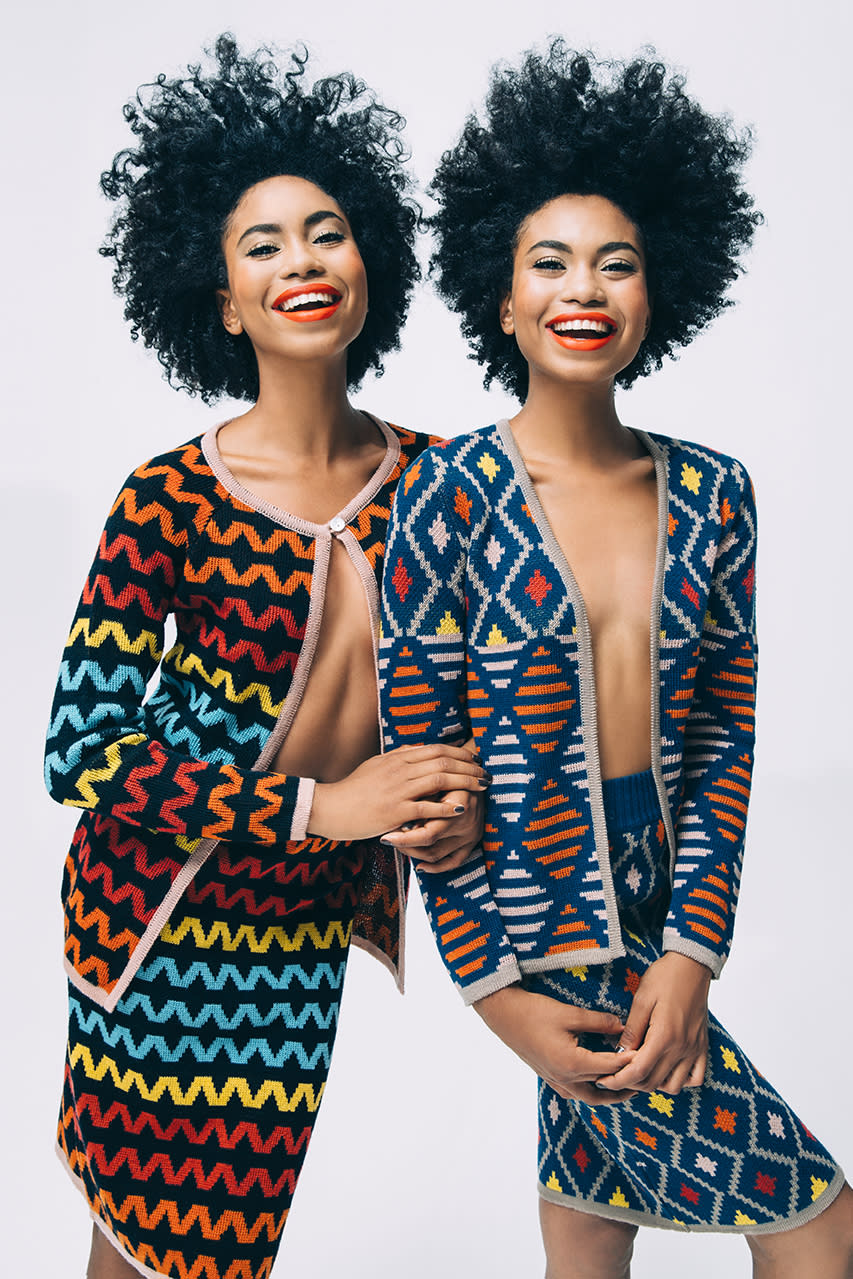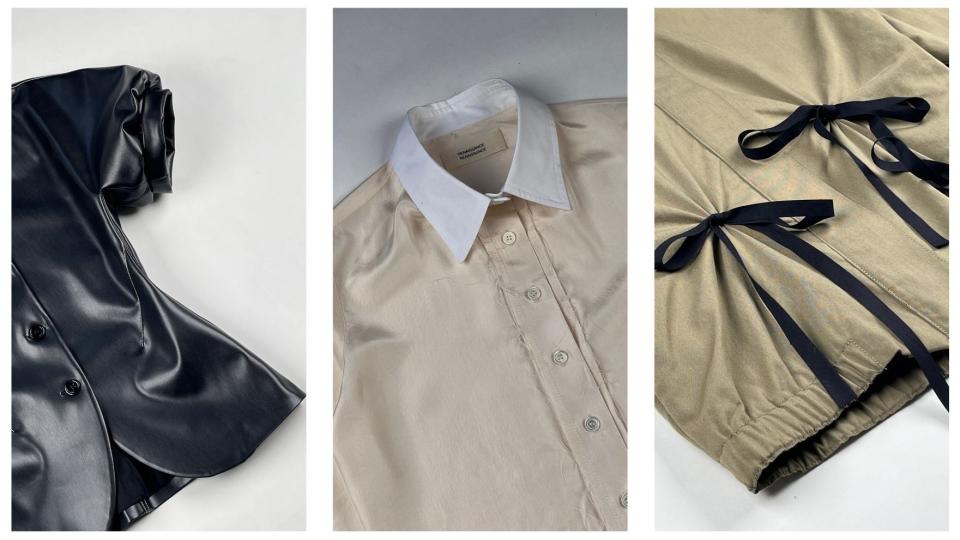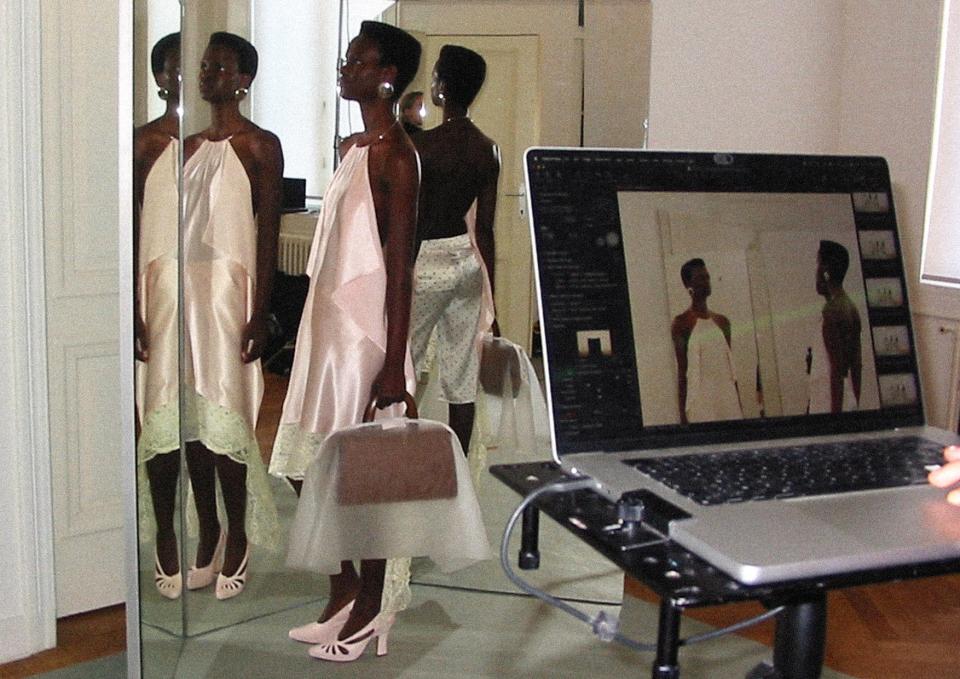Ones to Watch at Paris Fashion Week for Fall 2024

PARIS — These designers may be a fresh creative class set to make a splash during Paris Fashion Week but they bring with them the experience and wisdom handed down to them by their forebearers, be it their parents, three generations of their family or even centuries’ worth of love for the craft.
Maxhosa Africa
By the time South African designer Laduma Ngxokolo launched his Maxhosa Africa label in 2011 aged 24, he already had plenty of experience.
More from WWD
“I count more than 100 years because Xhosa people have been practicing magnificent beadwork for centuries,” he quipped during a preview with WWD.
Ngxokolo’s first taste of textile creation came around age 15 when his mother introduced him to machine knitting shortly before passing away.
He then studied textile and pattern design in school before pursuing a degree in textile design and technology at Nelson Mandela University in his hometown of Port Elizabeth, South Africa. He followed it up with a two-year master’s course at London’s Central Saint Martins, where he was awarded a scholarship and chose the materials future track.
Maxhosa Africa began as a thesis project based on the idea of a fashion range for Xhosa initiates. As part of the coming-of-age traditions of the second-largest cultural group in South Africa that counts Nelson Mandela and human rights activist and theologian Desmond Tutu in its ranks, young men give away the belongings of their childhood, including their clothes.
“My concept was to offer an alternative choice to [them] that is not Western-influenced or inspired,” said Ngxokolo, who’d personally found popular options often rooted in colonial dress codes unappealing.
A self-avowed Missoni fan, he saw knitwear as the best medium in which to translate traditional beadwork. Not only do both techniques rely on networks of pixel-like units — a stitch or a bead — but the Italian brand’s artistic approach echoed the way he wanted to “apply our [Xhosa] art in an African-centric way.”
While Ngxokolo is interested in contributing to the preservation of his cultural heritage for the next generation, he is adamant that people approach the brand as a high-end fashion line, one that is “sacred on the celebration of culture.”

“Culture is magnificent and therefore can be celebrated globally as much as people celebrate heritage,” he said. “My culture is bold and extravagant but the point I wanted to prove is that culture can be fashionable, tasteful and worn on a daily basis — if done right.”
Contemporary shapes brought alive the patterns he painstakingly researched by delving in museums throughout South Africa and the project turned into the brand in a matter of months. Five years later, the first Maxhosa Africa flagship opened in Johannesburg.
Nowadays the brand has five stores in its home country and is soon opening a six-month pop-up in New York City’s Canal Street. Women account for 65 percent of the business, which offers men’s and women’s designs that are shown during an annual one-day Mxs Kulture Festival event blending music, food and textile making.
The moment felt ripe to take the brand, which retails from $400 for a top up to $1,500 for intricate long dresses, to the wider stage. It had offered wholesale early on but pulled back after too many one-off projects that lasted the space of a season, never to return, he said.
Plus the brand’s first presentation in Paris on March 3 isn’t just a major step in its development, it’s also something of a turning point in Ngxokolo’s career.
Not only is he a new father but he’s passed the reins of his 300-employee company to his younger sister to concentrate on design and the addition of homeware and perhaps even a baby line.
“This is my reincarnation, starting the brand from scratch and taking a very new fresh approach,” he said with obvious relish.
Renaissance Renaissance
For Cynthia Merhej, her label Renaissance Renaissance is the culmination of three generations’ worth of experiences: her great-grandmother, who had an atelier in Jaffa, in what was then Palestine; her mother Laura and an aunt, with theirs in Beirut, and her own.
But it’s also the story of renewal and keeping hope alive in the direst circumstances, as the name suggests.
Growing up in the aftermath of Lebanon’s 30-year civil war, “everything was decimated and was just starting to be reconstructed,” the designer recalled. “A lot of what I learned about design, culture, art and so on came from a huge curiosity and desire to see what’s out there.”
Initially attracted to fashion — how could she not be, after a childhood spent at the knee of her mother — she’d grown disillusioned with it in her teens, favoring photography and drawing.
Leaving Lebanon for London led the young creative back to fashion, even as she pursued visual communication and illustration courses at Central Saint Martins and the Royal College of Art.
“But everything I was doing inevitably led back to fashion, my first love, [particularly] as the way I saw storytelling was always through clothes,” she said. Back to Beirut and her mother’s atelier she went, convinced that she needed to make a go in fashion.

Two years of full-time work brought her the capital she needed to launch her own brand in 2016. The next few years were even more intense as Merhej was “working five other jobs because this had to grow organically” while learning tailoring and craft, she said.
A first collection was emerging when the 2019 financial crisis hit her homeland and stranded Merhej and her husband in Paris. Selected as part of Net-a-porter’s Vanguard program in 2020, the brand was on the up and up when COVID-19 struck.
She was back in Beirut when the 2020 explosion at the city’s port happened, leaving hundreds dead, thousands injured and scores without homes or livelihoods. “It was really like being stuck on a roller coaster and not knowing when it’s going to end,” she said.
Still, she persevered. The brand’s atelier opened in the Lebanese capital in 2022, led by Merhej’s mother and owing to the designer’s belief that producing in her homeland is essential to fostering creativity afresh in the traumatized country.
With prices starting around 120 euros for tops and 200 euros for denim, dresses between 500 and 1,100 euros and coats up to 1,200 euros, Renaissance Renaissance will also be introducing a knitwear collaboration with second-generation family-owned brand Bielo, bowing for fall 2024.
Bringing her collections to market in Paris informally has already put Merhej’s work on other radars.
The designer was tapped to create the costumes for an upcoming adaptation of “Bonjour Tristesse,” the seminal 1954 novel by French author Françoise Sagan, starring Chloë Sevigny.
Julie Kegels
“For me, it’s all about finding a balance between beauty and ugliness, seriousness and ridiculousness because while designing I just want to have fun,” Belgian designer Julie Kegels told WWD ahead of her debut collection. “I also want to feel a lot of emotions while also coming out of my comfort zone.”
For this Antwerp native, fashion design was a dream she fostered from childhood, not least because she grew up between leather and fabric swatches in the wake of her father, a “super creative and very creative man” who works in accessories and bags.
The natural next step was scoring a spot in the Antwerp Royal Academy of Fine Arts’ prestigious fashion department, where she honed her skill under the tutelage of Walter Van Beirendonck and Dirk Van Saene.

After her 2021 graduation, Kegels found herself in that “weird time because you have this nice [graduate] collection and then you don’t know what to do,” she recalled.
The first ideas for an eponymous brand came, as did a clutch of projects, including a collaboration with contemporary label Essential Antwerp. But she decided to cut her teeth at Meryll Rogge and under Pieter Mulier at Alaïa first.
Eventually, her dream of launching her brand prevailed. “I always had in mind the desire to start something when the time was right, but I thought that if I waited too long, I’d be a bit afraid,” she said.
Her inaugural offering is “about this woman who can be everything she wants so she can choose what she wants to be but there is a duality in her,” she said.
Produced in Belgium, Italy and Portugal, her first collection will retail between 100 euros for small accessories and up to 2,500 euros for a leather coat. Dresses will come in between 700 and 1,000 euros.
Best of WWD

